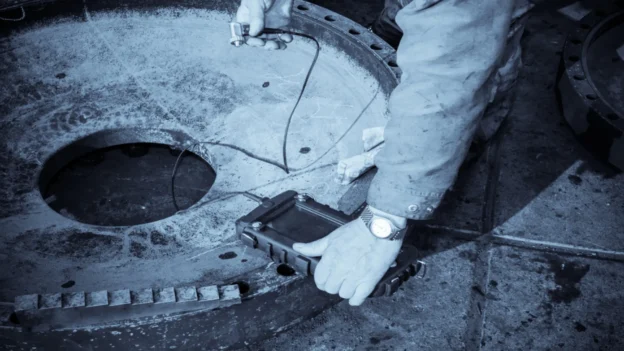In this era of extraordinary machines and astonishing ambition—where rockets ascend beyond the stratosphere and passenger aircraft thread the skies by the minute—there remains a discipline upon which all this progress rests. It does not shine in presentations nor sing in promotional reels. It does not ask for applause. But without it, towers fall, wings fail, and missions perish. That discipline is Nondestructive evaluation (NDE).
And it is vanishing. Not from our launch pads or our aircraft hangars, but from our universities. It is fading from the very institutions charged with preparing the stewards of safety for the next century.
NDE is not a footnote. It is a multidisciplinary craft that marries materials science, physics, fracture mechanics, and signal interpretation. It is how we interrogate a structure without dismantling it, how we uncover hidden faults before they become failures. To practice NDE is to think like a detective, perceive like a physicist, and to intervene before harm begins. It is, in every sense, a preemptive science.
And yet, in far too many industries, it has become an afterthought. A checklist item. This mindset is not merely flawed—it is dangerous. The tragic loss of the OceanGate Titan submersible in 2023 stands as a sobering example of what happens when warning signs are not just missed—but actively dismissed. The company relied on acoustic emission (AE) monitoring, a method that detects internal stress by listening for the microscopic sounds of deformation. But the data was reportedly ignored, and its interpretation misunderstood.
The phenomenon of the Kaiser effect—where prior stress can mask new damage until a higher load is reached—was either not accounted for or disregarded. Even more troubling, the CEO publicly claimed that the cracking noises heard during dives were “normal.” Rather than treat these emissions as warnings, the signals were rationalized, and the NDE data was avoided.
Compounding the issue, the sub was constructed primarily from carbon fiber composites—materials known for their strength in tension but poorly suited to withstand the extreme compressive forces of the deep ocean. This was not simply a material’s failure. It was a systemic dismissal of engineering limits and nondestructive evaluation itself—at the precise moment both were most needed.
Let us remind ourselves: the most successful aerospace programs in history did not relegate NDE to the margins. They wove it into the very fabric of design and production. At Skunk Works, Lockheed Martin’s crucible of innovation, inspection was not a separate function—it was embedded on the shop floor.
NDE engineers conferred daily with machinists and designers. Non-destructive principles were not confined to a back office—it stood watch at the source. With inspection embedded into the rhythm of the work, scrutiny became second nature, and excellence the expectation. This was not delay—it was discipline. It was rigor. And it produced some of the most enduring engineering marvels of the modern age.
We no longer live in an age where mistakes can be afforded. Space is no longer the exclusive domain of nations; it is the playground of billionaires, the highway of data, the battleground of strategy. Hypersonic systems are being tested in secrecy, while aging aircraft fly well beyond their intended lifespans. And while the air is thick with innovation, the foundations grow brittle. Additive manufacturing, bonded composites, and autonomous systems introduce new failure modes that our old inspection regimes struggle to address.
And amid all this, nations trade missile technologies with a frequency that should chill the conscience of any clear thinking observer. In such a world, there is no margin for error.
When failure comes now, it does not merely break hardware— it breaks trust, grounds fleets, and reshapes policy. NDE remains one of the last disciplines capable of seeing the danger before it becomes disaster. But only if it is empowered to act early. Only if it is taught. Funded. Respected.
We must return NDE to the center of engineering education— not as an elective or an afterthought, but as a foundational pillar. We must invest in new minds as well as new machines. And we must rebuild a culture where engineers and NDE professionals collaborate from day one, not day 101. The best programs will not wait until failure reminds them what they chose to ignore.
Let us be clear: technology alone will not save us. No algorithm will substitute for instinct. No automated scanner will replace the judgment forged through years of experience. We need NDE engineers—trained, trusted, and present— because the structures we build today are too complex, too critical, and too unforgiving to leave their integrity to chance.
Nondestructive evaluation may never headline a press release. It may never stand center stage at the launch countdown. But it is the quiet guardian of reliability, the discipline that sees the crack before the rupture, the signal before the silence.
And if we choose to ignore it—if we allow it to wither from the classroom and be sidelined in the boardroom—we will face the consequences not in speculation, but in wreckage.
This article was developed by specialist Anita Gregorian and published as part of the fifth edition of Inspenet Brief magazine August 2025, dedicated to technical content in the energy and industrial sector.

